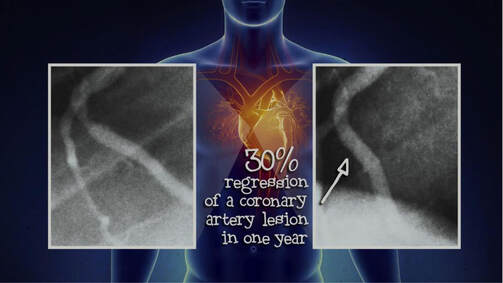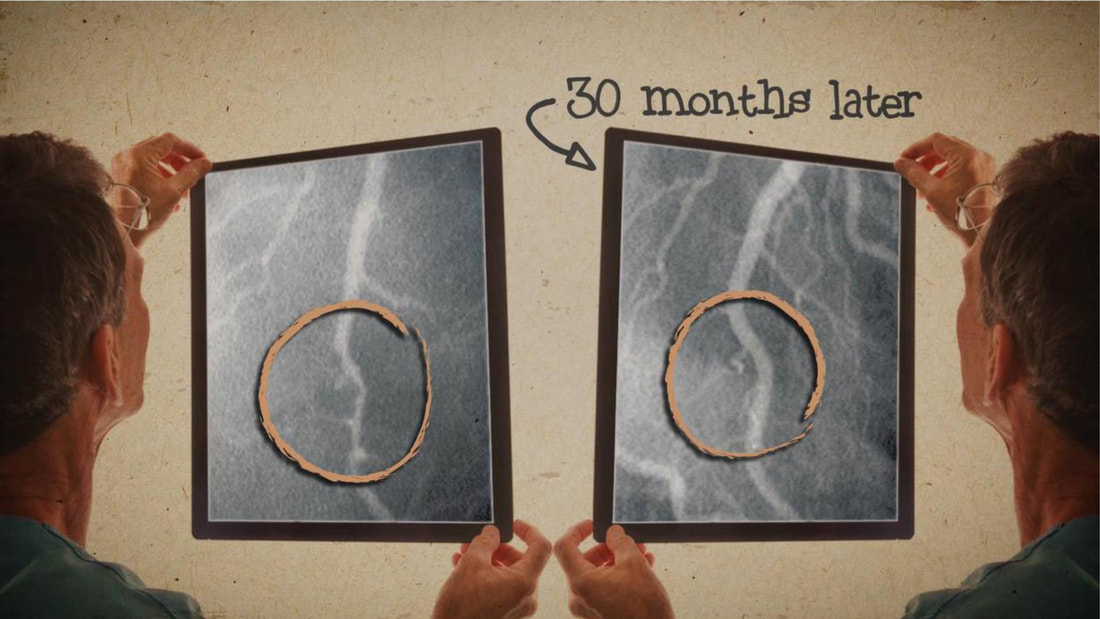Welcome!
Congratulations on starting your Basic Culinary Medicine Course. You’ve taken the first step in taking control of your own personal health by starting in your kitchen. Before you get started, we will have a brief overview on the course.
Happy learning!
The goal of the CulinaryMD is to get you cooking and eating mostly a whole-food plant-based diet and preparing them the CulinaryMD way. We want to help you become more comfortable first in your home kitchen. This will be achieved using the art of food preparation blended with the science of medicine to help you better understand the evidence-based utilization of whole food plant-based diet in the prevention, treatment, and even reversal of some chronic disease.
As a part of the CulinaryMD community of learners, we expect you to engage with instructors by sharing your experiences and asking questions using the provided help icon. The CulinaryMD team is looking forward to helping you navigate and experience the vast world of healthy cooking alongside with health education. We anticipate that you will be prepared to learn, experience, and be challenged with the learning activities in the coming days.
Good luck with your course!
Your CulinaryMD Team
Congratulations on starting your Basic Culinary Medicine Course. You’ve taken the first step in taking control of your own personal health by starting in your kitchen. Before you get started, we will have a brief overview on the course.
Happy learning!
The goal of the CulinaryMD is to get you cooking and eating mostly a whole-food plant-based diet and preparing them the CulinaryMD way. We want to help you become more comfortable first in your home kitchen. This will be achieved using the art of food preparation blended with the science of medicine to help you better understand the evidence-based utilization of whole food plant-based diet in the prevention, treatment, and even reversal of some chronic disease.
As a part of the CulinaryMD community of learners, we expect you to engage with instructors by sharing your experiences and asking questions using the provided help icon. The CulinaryMD team is looking forward to helping you navigate and experience the vast world of healthy cooking alongside with health education. We anticipate that you will be prepared to learn, experience, and be challenged with the learning activities in the coming days.
Good luck with your course!
Your CulinaryMD Team
MODULE 1A |
The Science of Culinary Nutrition
NUTRITIONAL SCIENCE
Readers need to be aware of the credibility of the information we deal with. Articles coming out in social media and a multitude of publications may not equally be reliable. It’s also necessary to understand that research studies coming in many forms are not exempted from many unknown factors. Below are the common types of studies used in establishing nutritional science.
Readers need to be aware of the credibility of the information we deal with. Articles coming out in social media and a multitude of publications may not equally be reliable. It’s also necessary to understand that research studies coming in many forms are not exempted from many unknown factors. Below are the common types of studies used in establishing nutritional science.
|
Nutrition prescription is one of the Core Lifestyle Medicine Competencies. Dr. Dennis Burkitt emphasized the significant dietary changes that followed the industrial revolution causing the major increase of chronic disease incidence and prevalence whenever there is a reduction in starch foods and fiber intake and a tremendous rise in animal fats, salt, and sugar.
|
Heart Disease - the Top Killer Disease
One study published in the International Journal of Epidemiology revealed a strong correlation between serum cholesterol, diet, and coronary heart disease. People in this specific part of the world are not in any way exposed to a Western diet, and it’s surprising that heart disease, the number one killer among Americans, are almost non-existent in the African population of Uganda. The staple foods, green plantain, and sweet potatoes are steamed in banana leaves: cassava, yams, and millet are also stapled commodities in particular of the non-Baganda groups, while pumpkins, tomatoes, and green leafy vegetables are taken by all. The adequacy of protein in the diet depends almost entirely on the extent to which pulses, groundnuts, and cereals are used.
|
Dr. Caldwell Esselstyn also noted that coronary artery disease is virtually absent in cultures that eat plant-based diets, such as the Tarahumara Indians of northern Mexico and Papua highlanders of New Guinea, and the inhabitants of rural China and central Africa. Hundreds of thousands of rural Chinese live for years without a single documented myocardial infarction.
|
The editor-in-chief of the American Journal of Cardiology Dr. William Roberts is convinced that the disease has a single cause, namely cholesterol and that the other so-called atherosclerotic risk factors are only contributory at most. In other words, if the total serum cholesterol is 90 to 140mg/dL, there is no evidence that cigarette smoking, systemic hypertension, diabetes mellitus, inactivity, or obesity produces atherosclerotic plaques. Hypercholesterolemia is the only direct atherosclerotic risk factor; the others are indirect. Dr. Roberts also implied that the goal for all populations – not just those with heart attacks or strokes, diabetes mellitus, or non-coronary atherosclerotic events – must be LDL cholesterol <100 mg/dL and ideally <70mg/dL. If such a goal was created, the great scourge of the Western world would be eliminated. In fact, it was published in the Journal of Lipid Research that the average blood cholesterol level in the United States (and other countries using Western medicine guidelines), the so-called normal level (up to 200mg/dL), was actually abnormal. It was accelerating atherogenesis and putting a large fraction of the so-called normal population at a higher risk for coronary heart disease.
It was found that almost 75% of heart attack patients fell within the recommended targets for Bad cholesterol (LDL), demonstrating that the current guidelines may not be low enough to cut heart attack risk. The accumulating data from current multiple lines of evidence consistently demonstrate that the physiologically normal LDL level and the thresholds for atherosclerosis development and coronary heart disease events are approximately 50 to 70 mg/dL.
After only twenty-four months, the patients who made comprehensive lifestyle changes showed improvement (reversal) in their heart disease, whereas those in the randomized control group got worse. This, the first randomized controlled trial showing that lifestyle changes alone could reverse heart disease, was published in the Journal of the American Medical Association. In 1984, he launched the Lifestyle Heart Trial.
|
In the Cleveland Clinic, Dr. Caldwell Essenstyn was also developing a study. He had encountered some resistance from the establishment. Most senior cardiologists at the Cleveland Clinic, he writes, “did not believe there was a connection between diet and coronary disease. Nevertheless, in 1985, the Department of Cardiology agreed to participate in his first proposed study.
|
It would refer patients to him – primarily those for whom bypass surgery or angioplasty had failed, and several who had been told there was nothing more that could be done for them. Esselstyn’s hypothesis was that plant-based nutrition could reduce their cholesterol levels below 150 mg/dL (closer to the level seen in those traditional cultures that had no heart disease) and, in so doing, slow or halt the disease process. By 1988 a cohort of twenty-four people with severe, progressive coronary artery disease was eating a very low-fat, plant-based diet under his supervision.
Dietary Approach to Heart Disease
From a dietary standpoint, Ornish’s and Esselstyn’s studies were very similar. However, unlike Esselstyn, who instructed patients to continue their medications, Ornish did not use cholesterol-lowering medications in his study. Moreover, he stipulated other lifestyle changes in addition to the nutritional component, including relaxation techniques, moderate exercise, smoking cessation, and participation in a support group – interventions he believes are also critical to the success of the program. His study included forty-eight patients who were randomized into two groups: twenty-eight of patients made the recommended diet and lifestyle changes, while the other twenty served as a control group, following standard medical treatment and dietary advice from the American Heart Association.
Ornish’s and Esselstyn’s studies represent a dramatic medical breakthrough. Until that point, the best that drugs and surgical treatments could do was manage heart disease. They ended up doing something few even believed was possible: they showed that heart disease is reversible. And they did it with lifestyle interventions that had no negative side effects. Simply by stopping eating foods that were clogging up their arteries and instead of eating a healthy plant-based diet, their patients began to heal – at any age. Their remarkable turnarounds show that it’s never too late when it comes to heart disease.
|
|
|



